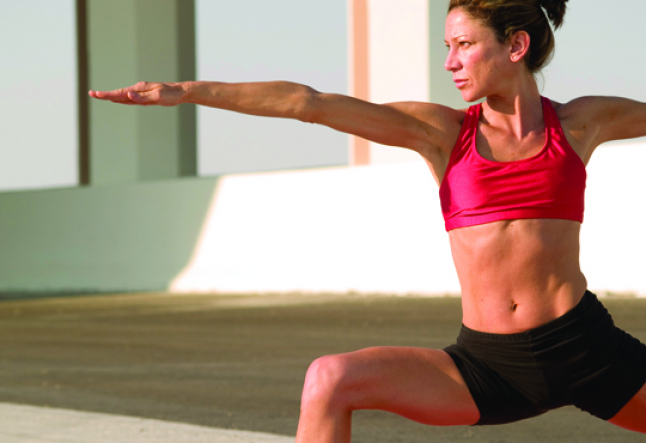asanas: concentration

getting out of your head
Once I took a class with a teacher who asked her students to keep in mind the ABCs of yoga while doing our asanas: attitude, breath and concentration. During the class, I tried my best to keep them in mind, but I don’t think I succeeded. I did not get the opportunity to take another class with her, but the experience changed how I thought about my practice. For many months later, I was still thinking about the ABCs, especially concentration.
Sometimes I have trouble focusing on what is right in front of me, but I noticed that in yoga it took little effort for my mind to focus on the asanas. In class, I listened attentively to the instructions and then tried to translate them into directions to move different body parts. Unfortunately, this method did not work so well for me. I often found myself in triangle pose with my left foot forward when the rest of the class was in triangle with the right foot forward. Eventually, it dawned on me that I might try listening with my body. This revelation had a major impact on my practice. I had done poses like triangle and tree dozens of times, but with both my mind and body focused, doing these asanas became brand new experiences.
Around this time, I began to set goals like being able to put my hand on the ground in triangle pose. Practicing yoga became a serious business. In warrior two, my brows were furrowed and I would stare pointedly pass my taut forward hand. One day, while I was in this pose, my teacher came over. I was ready for him to adjust my torso as he had often done before. Instead, he put his palms around my front hand and gently squeezed the knuckles until they bent. He said, “Relax. You don’t need to be so serious.” I cracked a smile.
Relaxing is difficult for me, but I wanted to try. After doing some Internet research, I decided to experiment with spontaneously smiling during class, but I felt ridiculous doing it. Being conscious of my emotional state was awkward because I usually try to block out my feelings. I was taught that emotions clouded thoughts and prevented you from making good decisions. If I wanted to achieve my goals, I had to ignore my emotions. Unfortunately, I knew that they were always present, even if I didn’t acknowledge them. Several different people had told me that when some students do hip openers like pigeon pose, they start crying, not due to pain but due to a release of emotions. When I first heard this, I felt embarrassed for those students. Now, I wondered if I might become one of them. Was I really able to prevent my emotions from affecting my practice, or was I just fooling myself? I wanted to know.
When I started paying attention to my emotions, I realized that the mind, body and heart weren’t independent systems carving out parallel paths in time. They were intertwined, influencing each other every moment of the day. I felt this strongly whenever I did half moon pose. In the asana, once I get my back leg up and reach into the air with my free arm, my weight begins shifting left and then right. When this tittering begins, I tense up and feel upset that I am losing my balance. My mind reacts to my emotions by sending frantic instructions to my body to move the back leg, shift the hips and turn the torso. I usually end up falling and feeling dejected at the same time. On occasion, I do find that elusive point of balance; my mind and body are engaged and I feel happy. It was surprising to see how much I was addicted to the highs of accomplishments and the lows of failure. I loved to bask in the happiness of a pose well-done, but I was also equally willing to wallow in failure when I fell. I felt like I was on an emotional roller coaster.
Each time I did half moon pose my mind, heart and body were concentrating deeply on trying to create a certain outcome. With such a strong emotional investment, the aftermath was bound to be a crashing low or a soaring high. In the meantime, I had completely missed the experience of being in the pose. I decided to shift my attention. Whenever I attempt half moon pose, I don’t know if I will balance effortlessly, flail around absurdly or do something completely different. However, I do know that my intention is to be there with my mind, heart and body, absorbing what the experience has to offer.
Concentrating my energy toward experiencing yoga changed my attitude toward my practice significantly; I felt closer to it; my time on the mat became more vivid. There are times when I feel that my practice is not where I want it to be, but this doesn’t seem to be so important these days. Mainly, I feel grateful that I have it at all. Paying attention wholeheartedly changed yoga into more than something that I do; it helped yoga become part of my life.
Ann Bui lives in the San Francisco Bay Area. She hopes to one day do a handstand away from the wall.